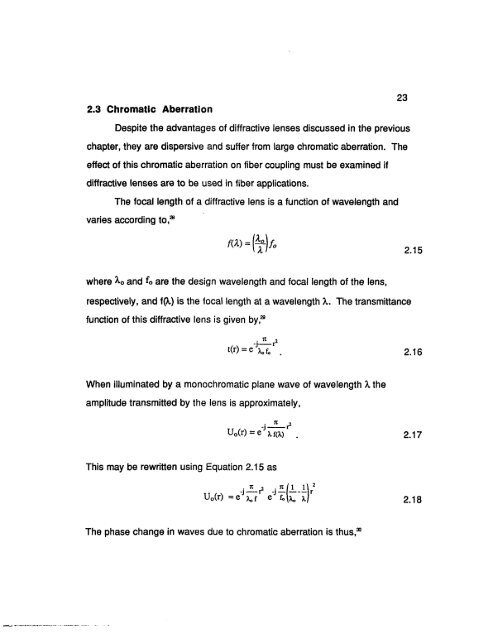azu_td_1349475_sip1_... - Arizona Campus Repository
azu_td_1349475_sip1_... - Arizona Campus Repository
azu_td_1349475_sip1_... - Arizona Campus Repository
Create successful ePaper yourself
Turn your PDF publications into a flip-book with our unique Google optimized e-Paper software.
2.3 Chromatic Aberration<br />
23<br />
Despite the advantages of diffractive lenses discussed in the previous<br />
chapter, they are dispersive and suffer from large chromatic aberration. The<br />
effect of this chromatic aberration on fiber coupling must be examined if<br />
diffractive lenses are to be used in fiber applications.<br />
The focal length of a diffractive lens is a function of wavelength and<br />
varies according to, 29 (W-fr)/. 2<br />
where<br />
and fo are the design wavelength and focal length of the lens,<br />
respectively, and f(X.) is the focal length at a wavelength X. The transmittance<br />
function of this diffractive lens is given by, 29<br />
-j—— r 2<br />
t(r) = e ^6, 2.16<br />
When illuminated by a monochromatic plane wave of wavelength X the<br />
amplitude transmitted by the lens is approximately,<br />
Uo(r) = e"V x/ . 2.17<br />
This may be rewritten using Equation 2.15 as<br />
Uo(r) =e'"kf e' x 2.18<br />
The phase change in waves due to chromatic aberration is thus, 30
















